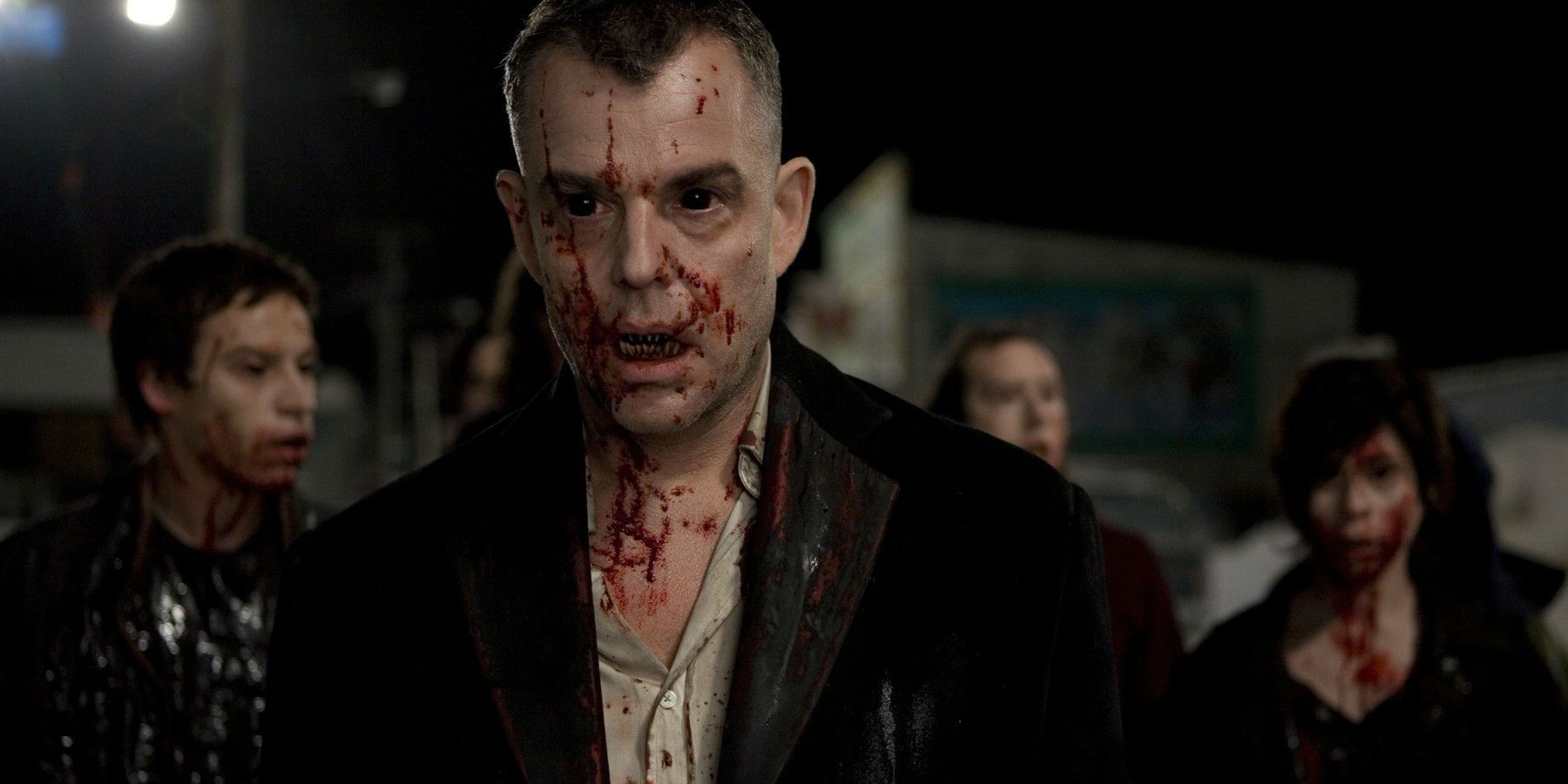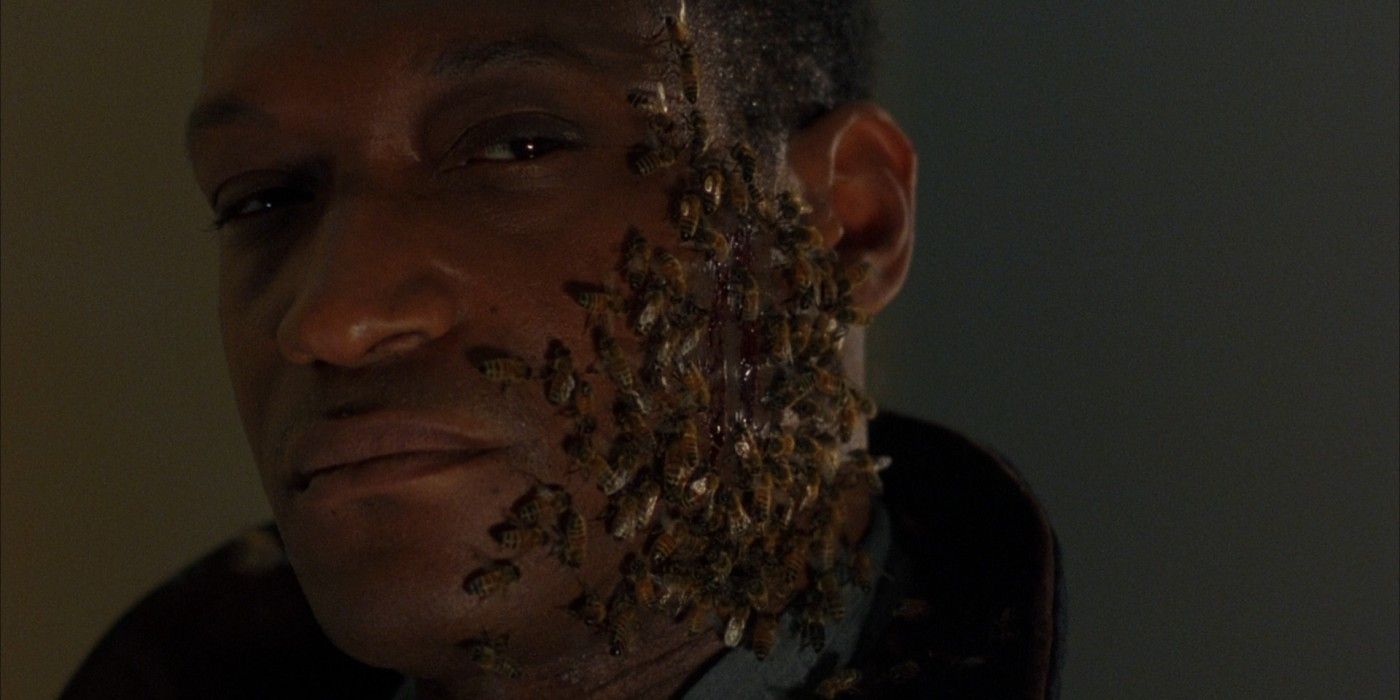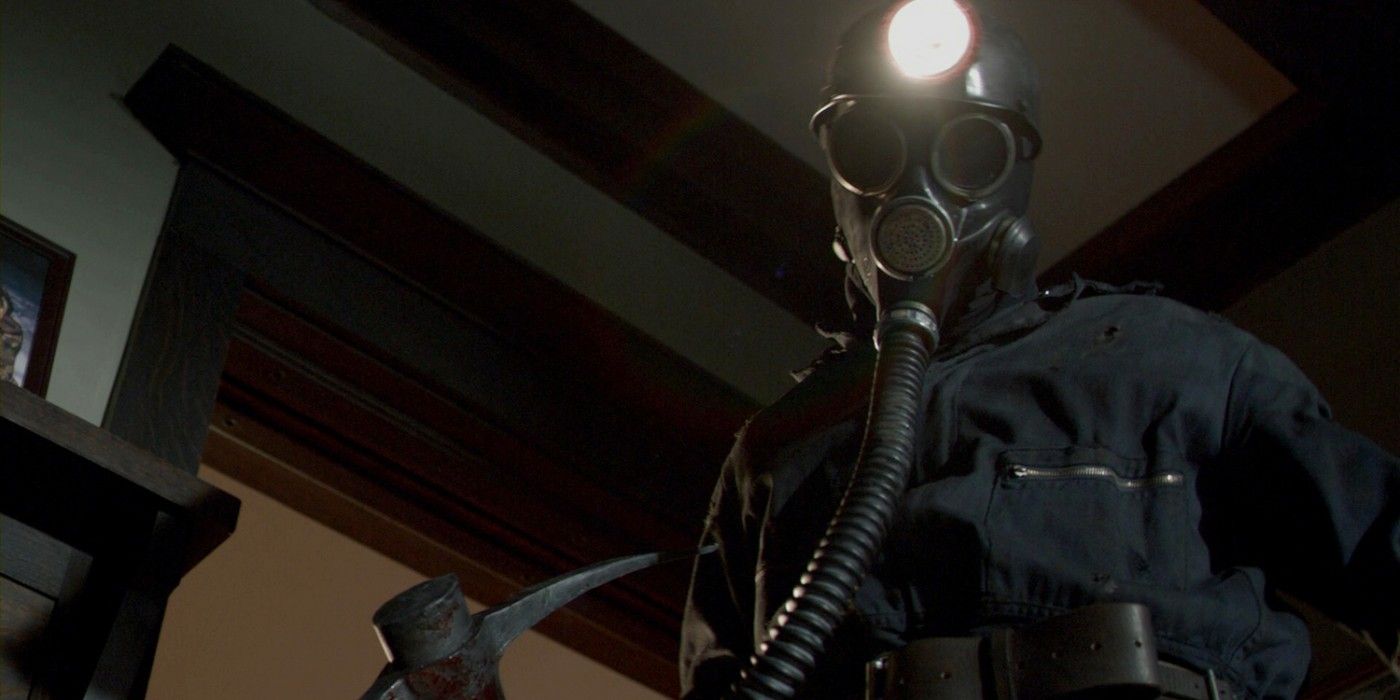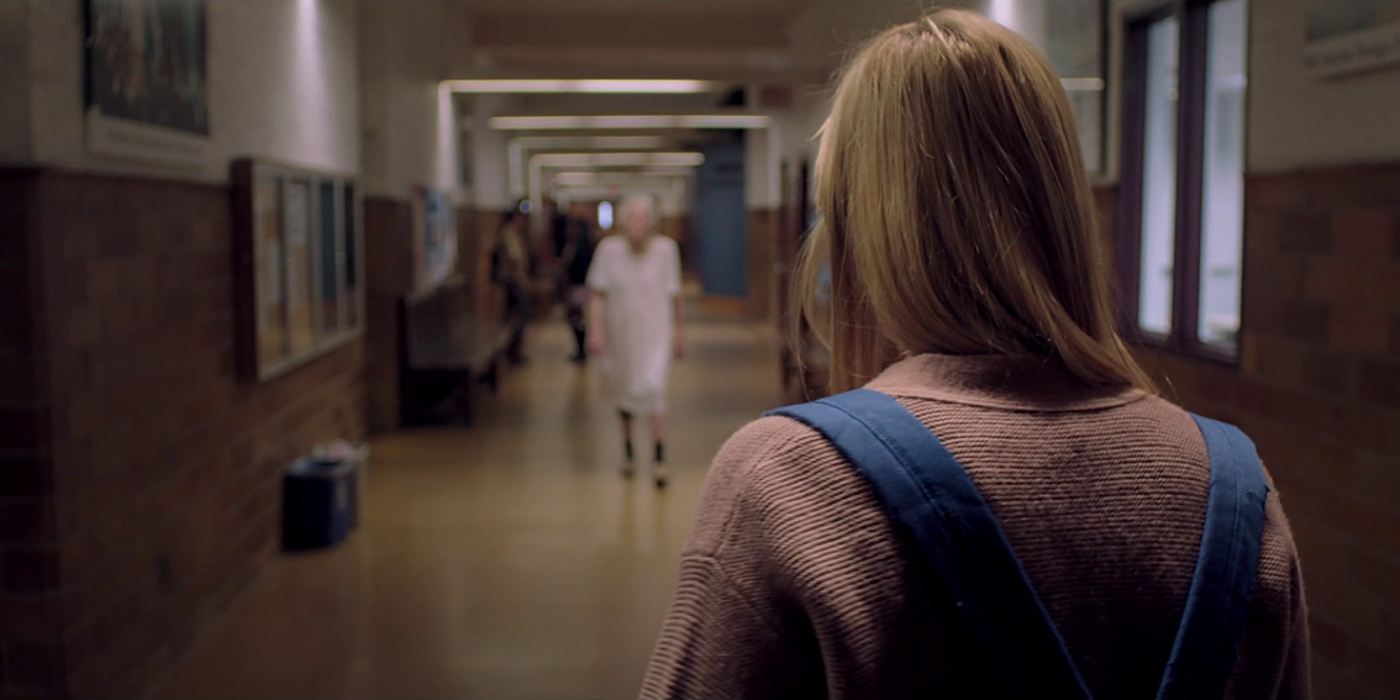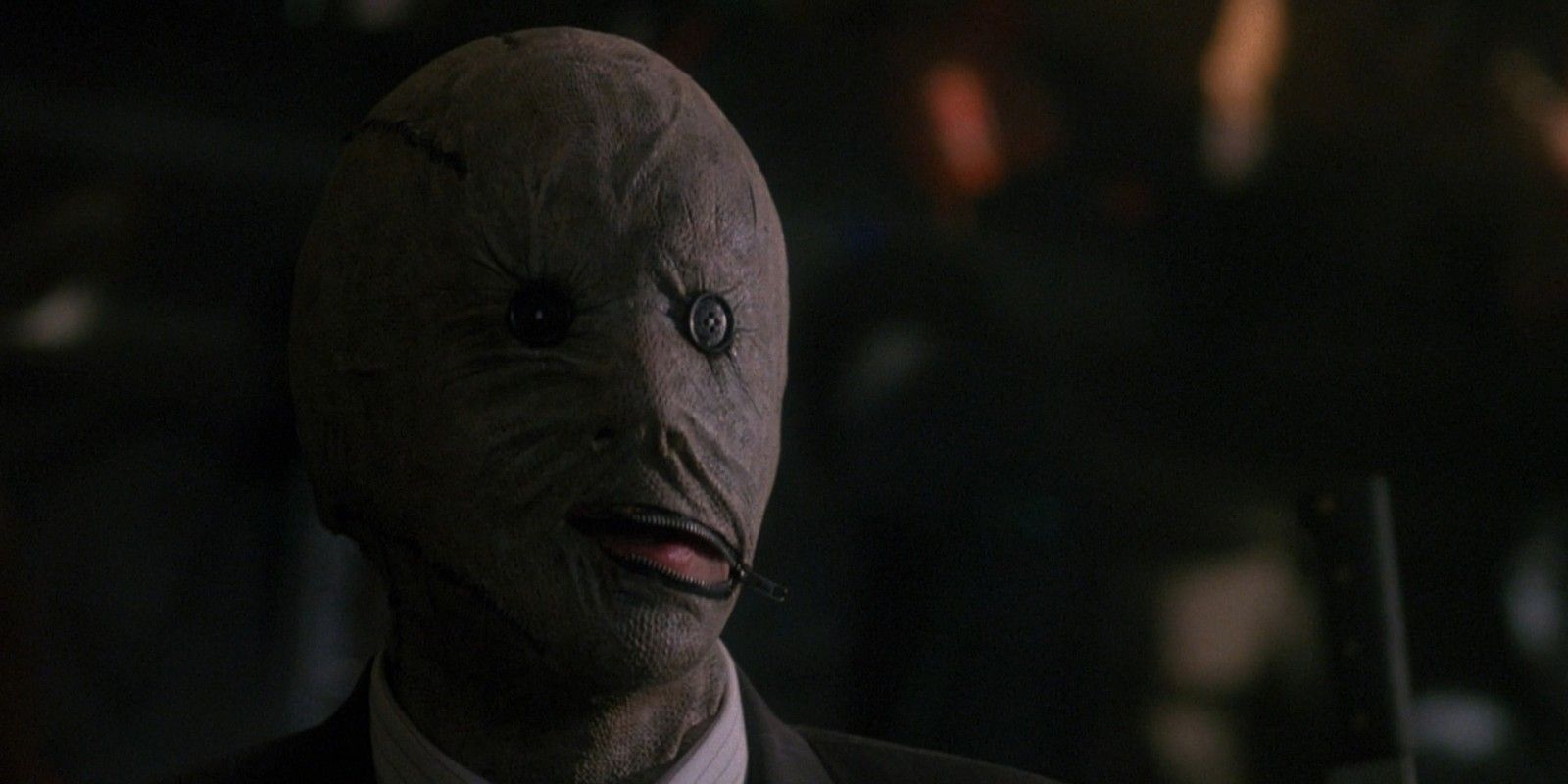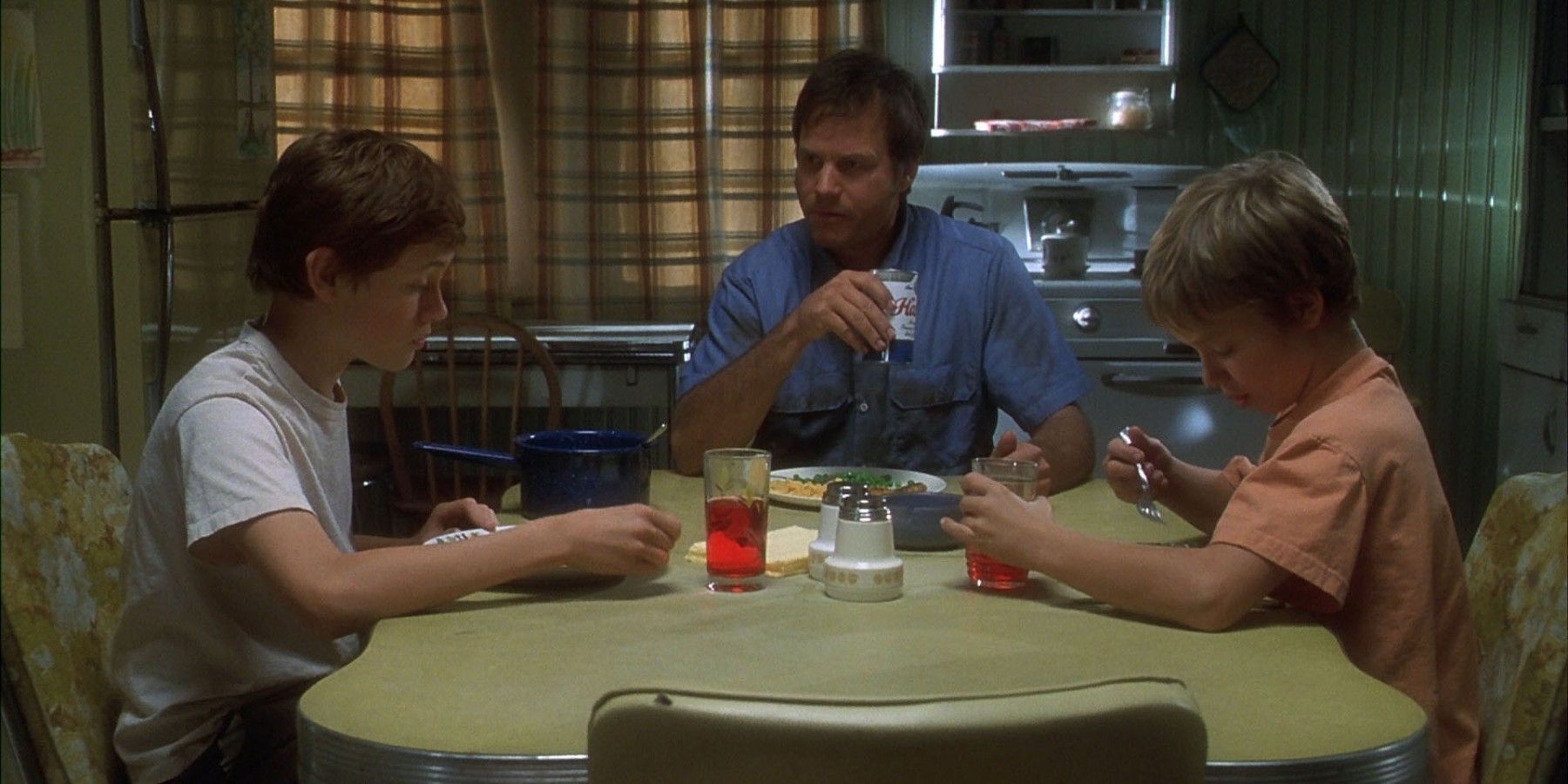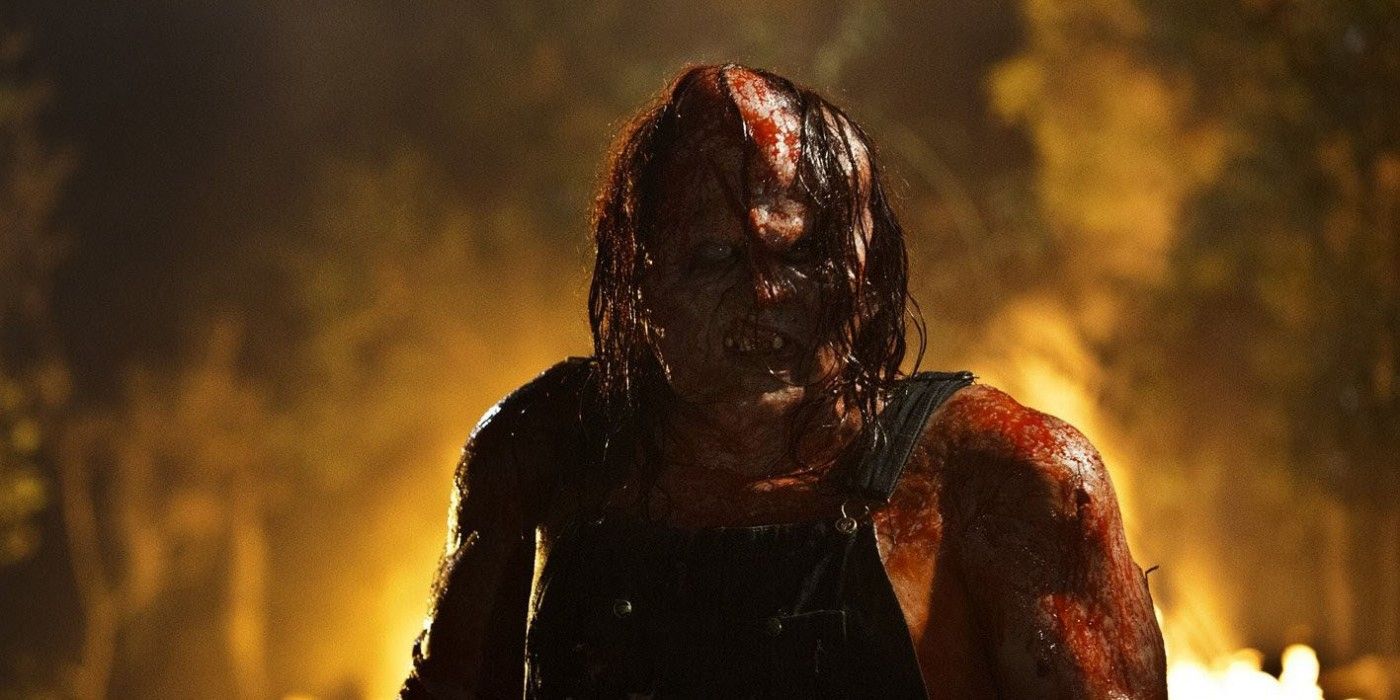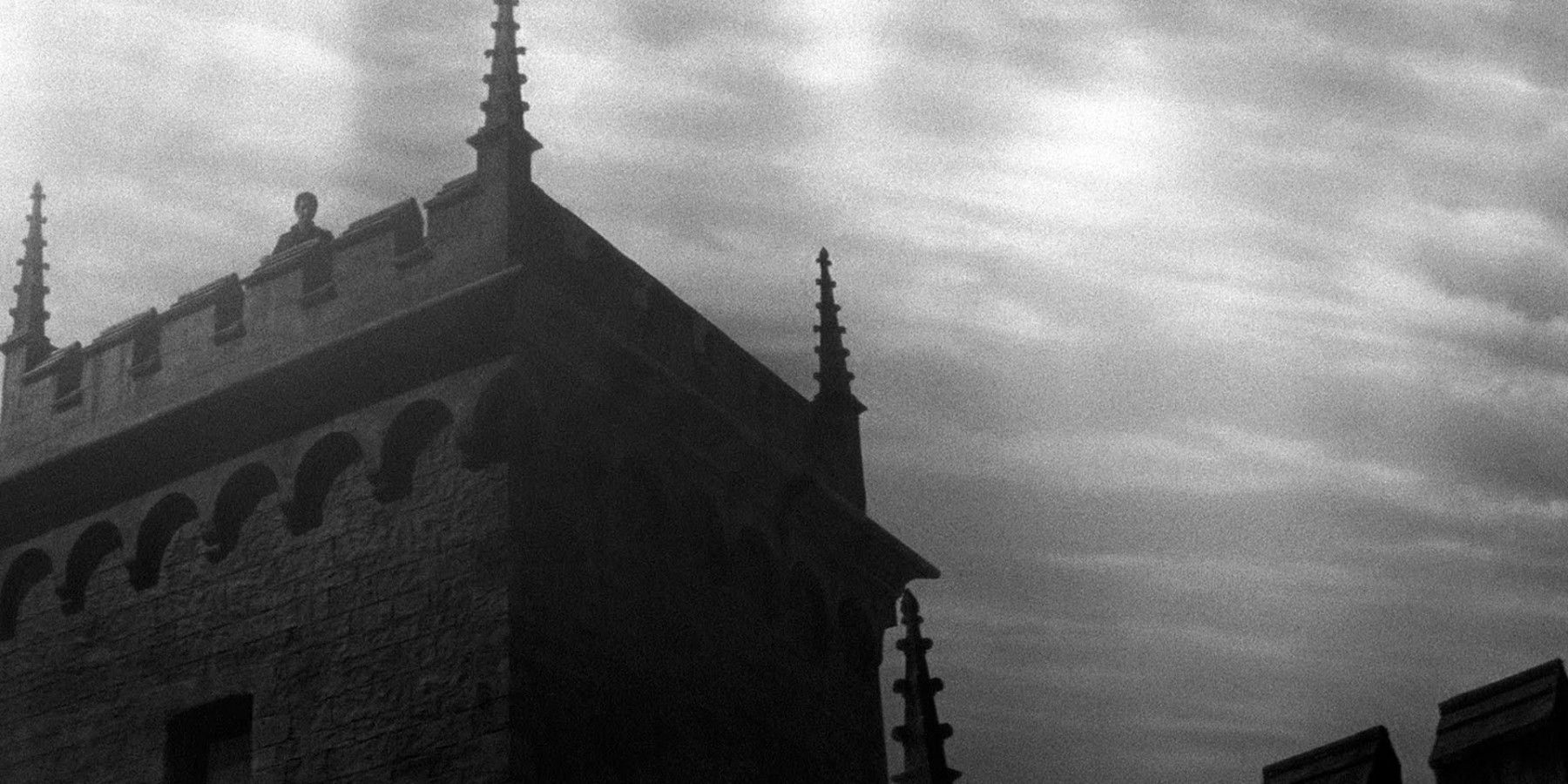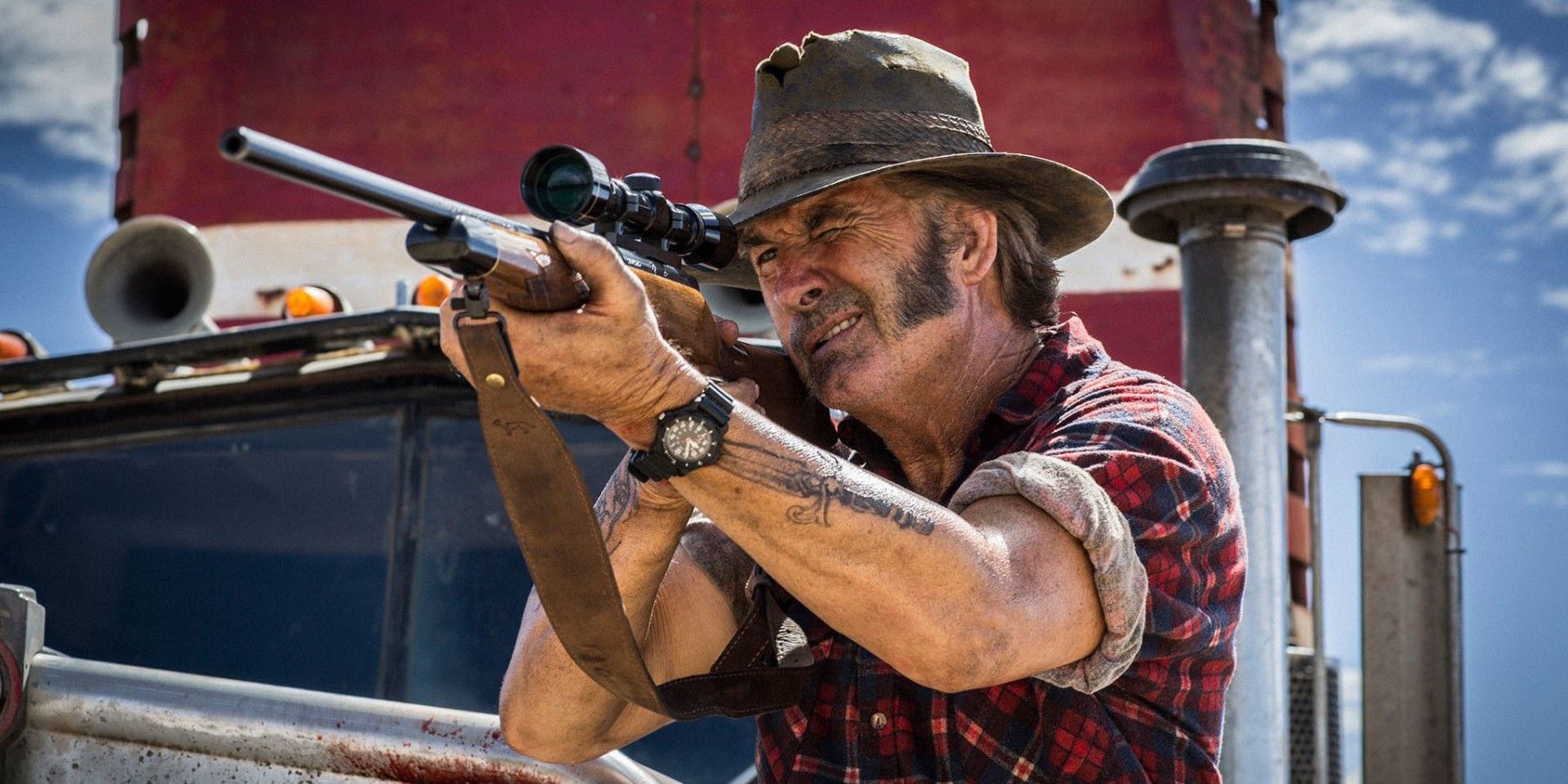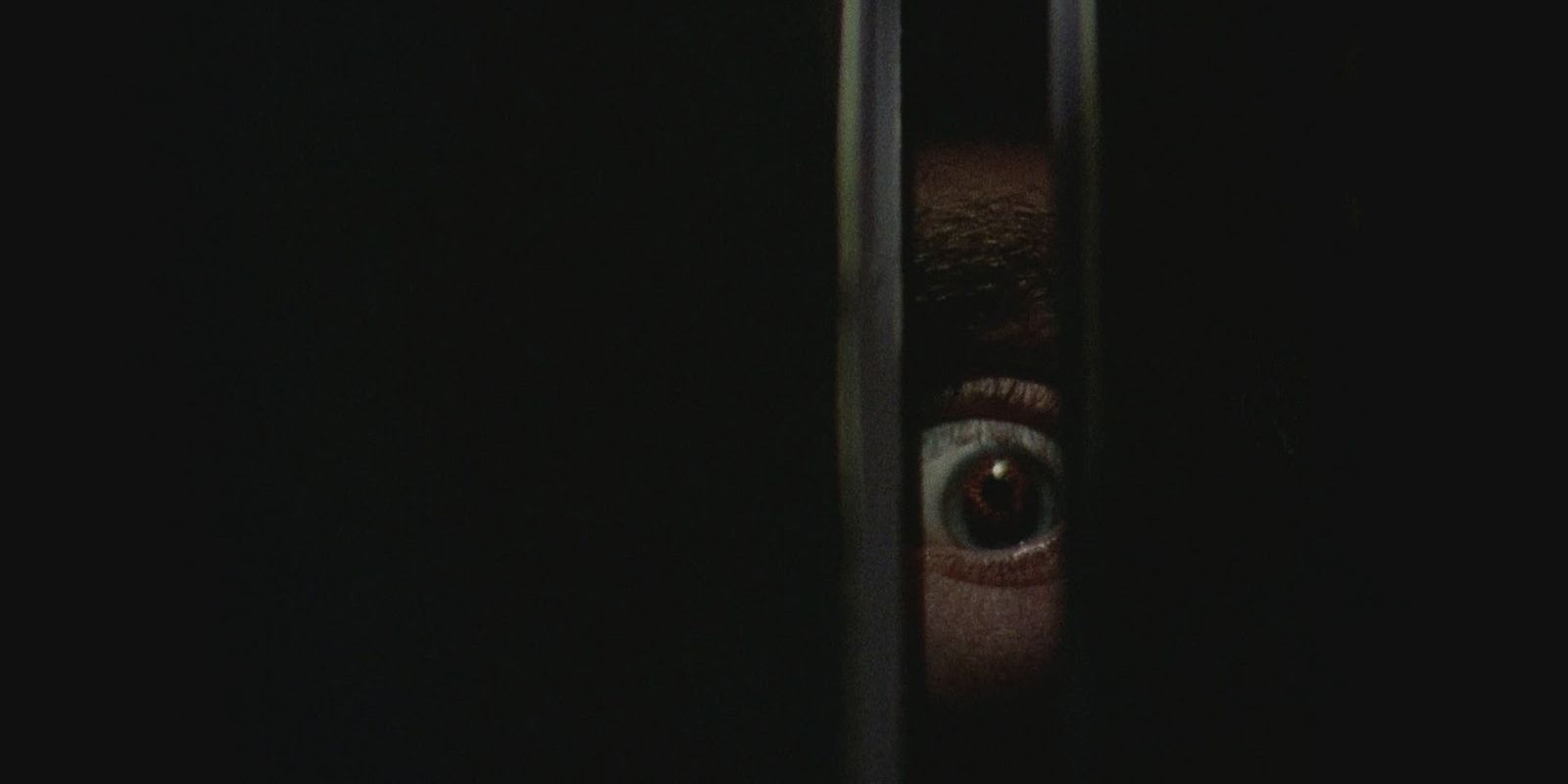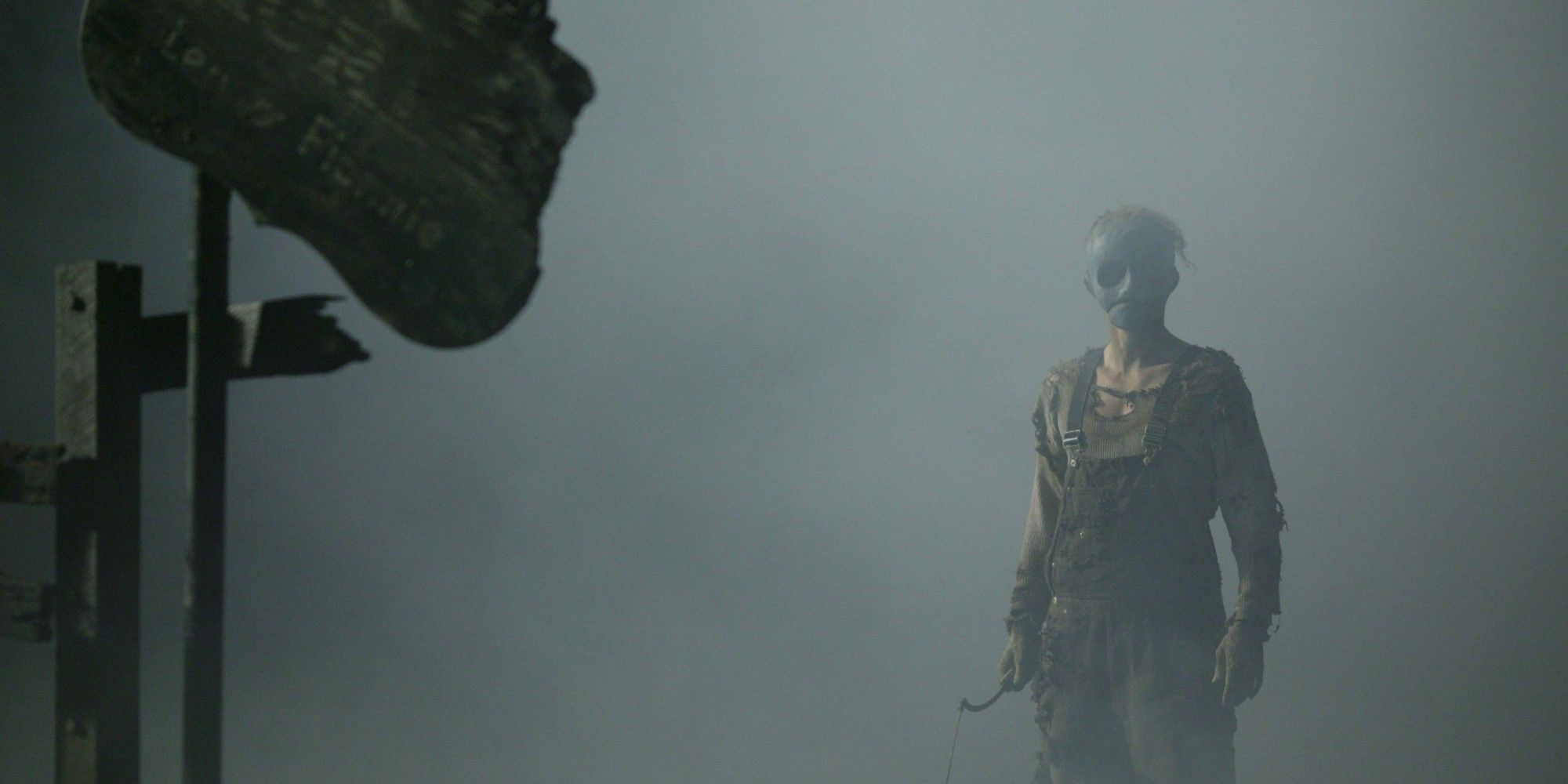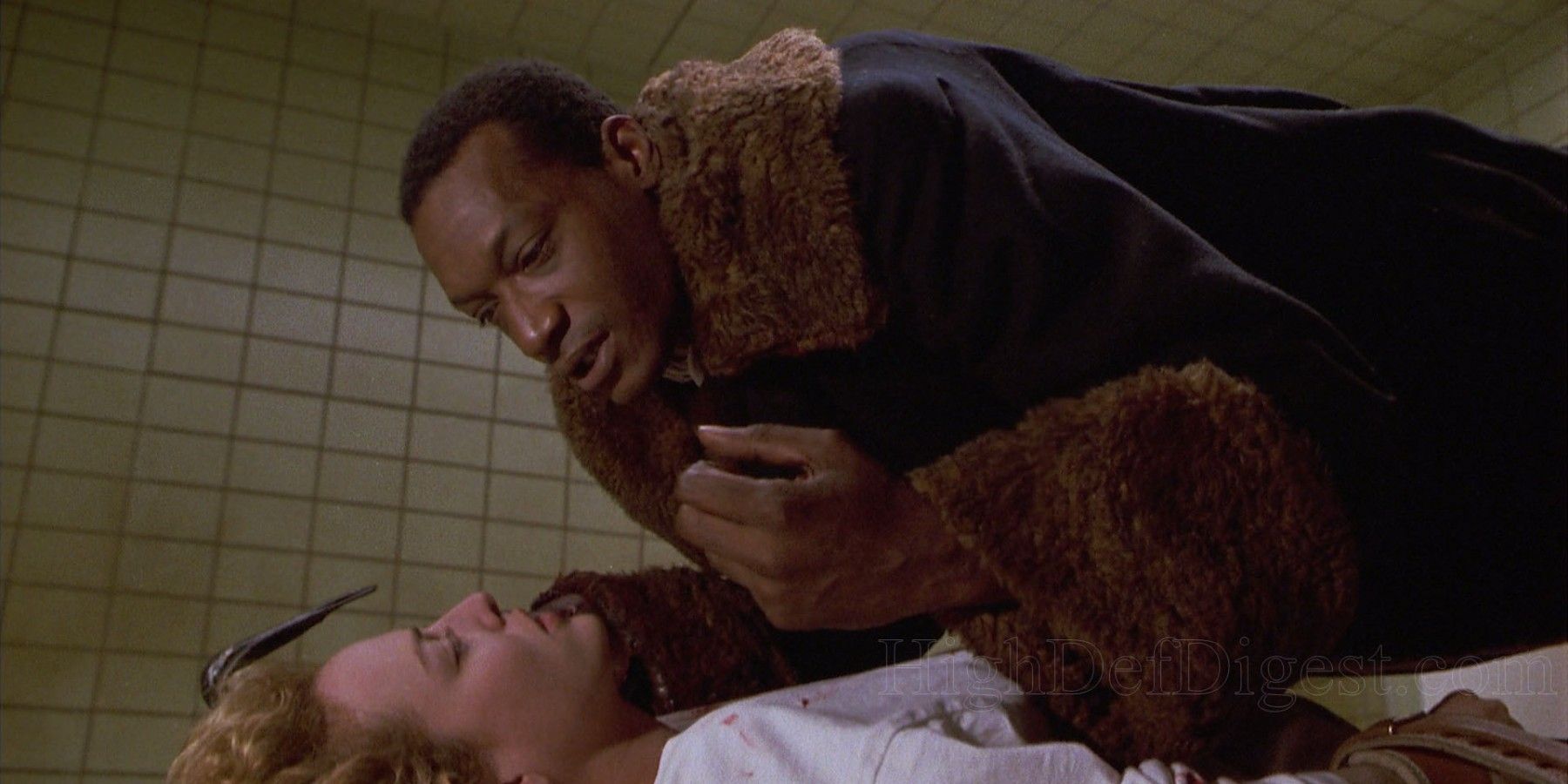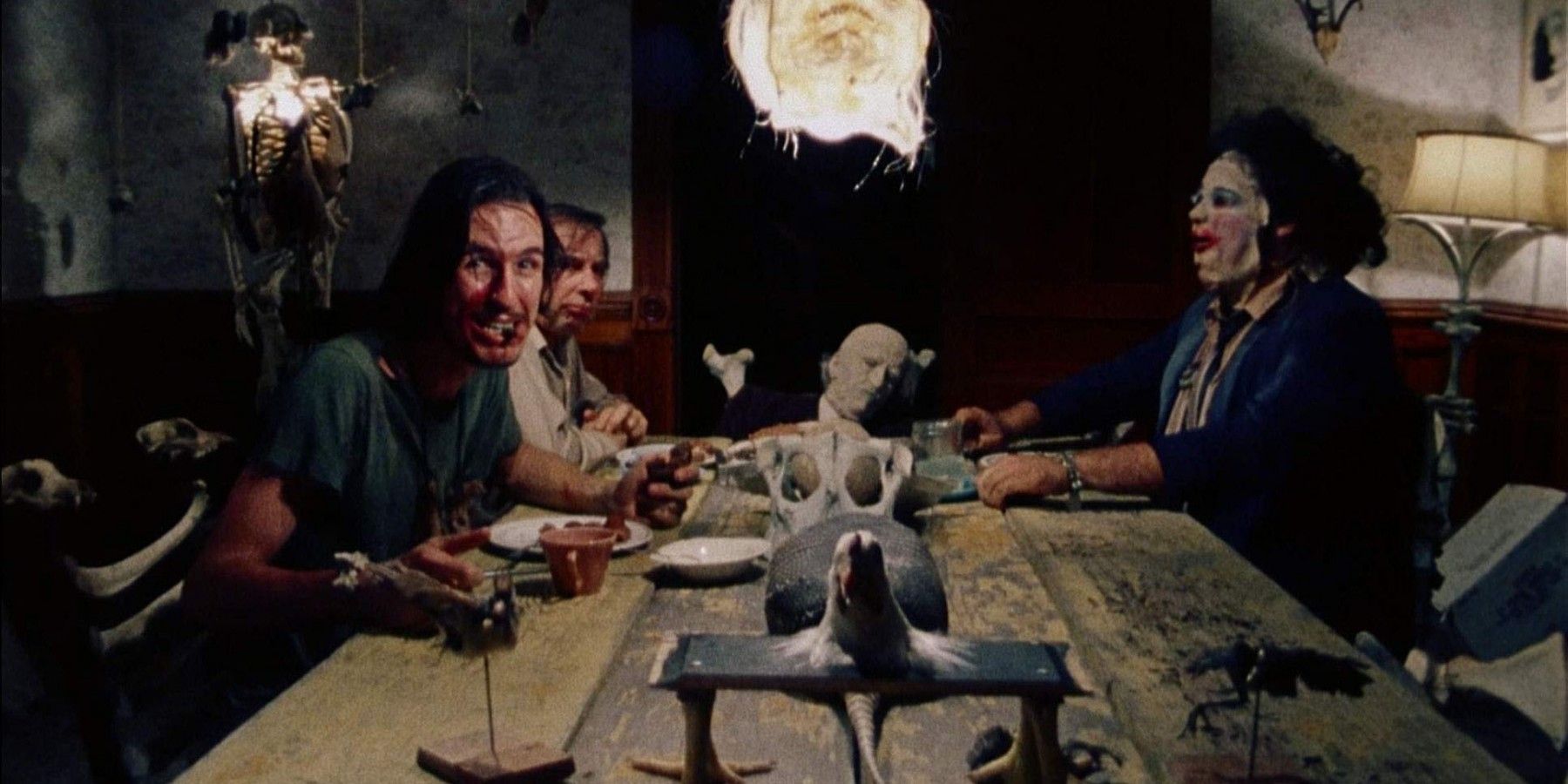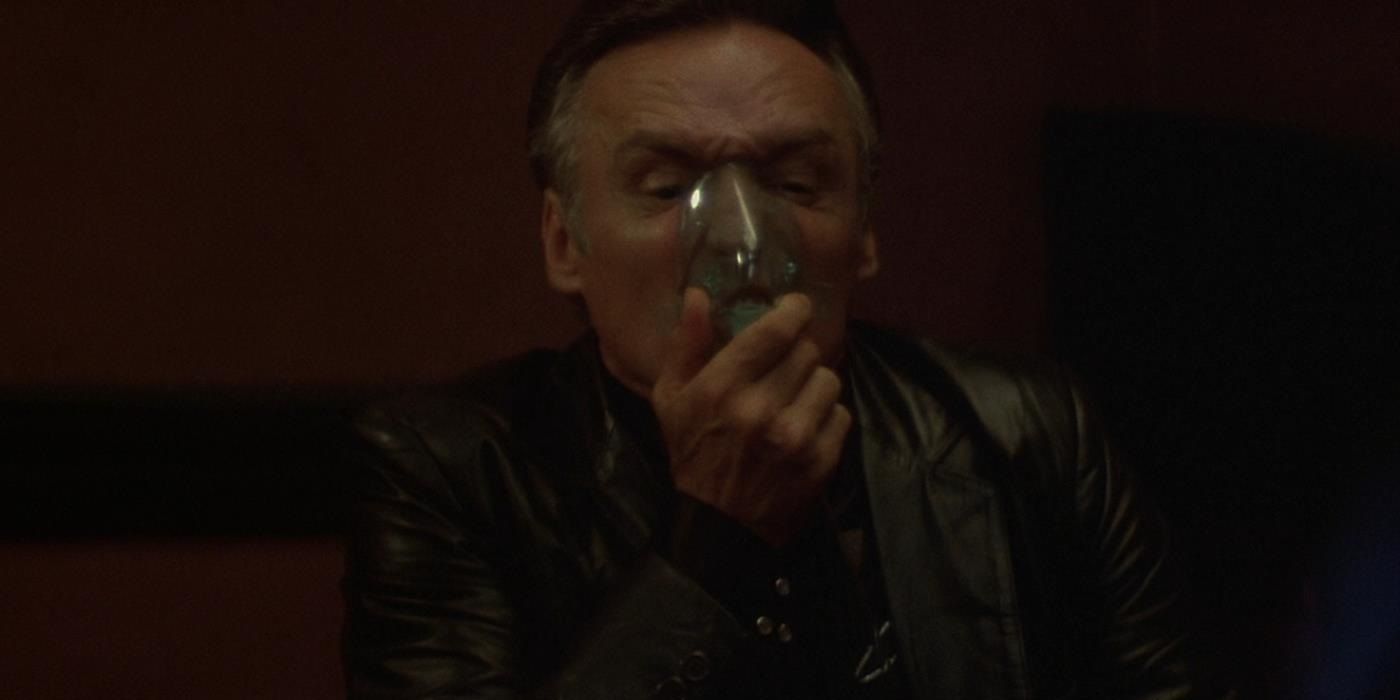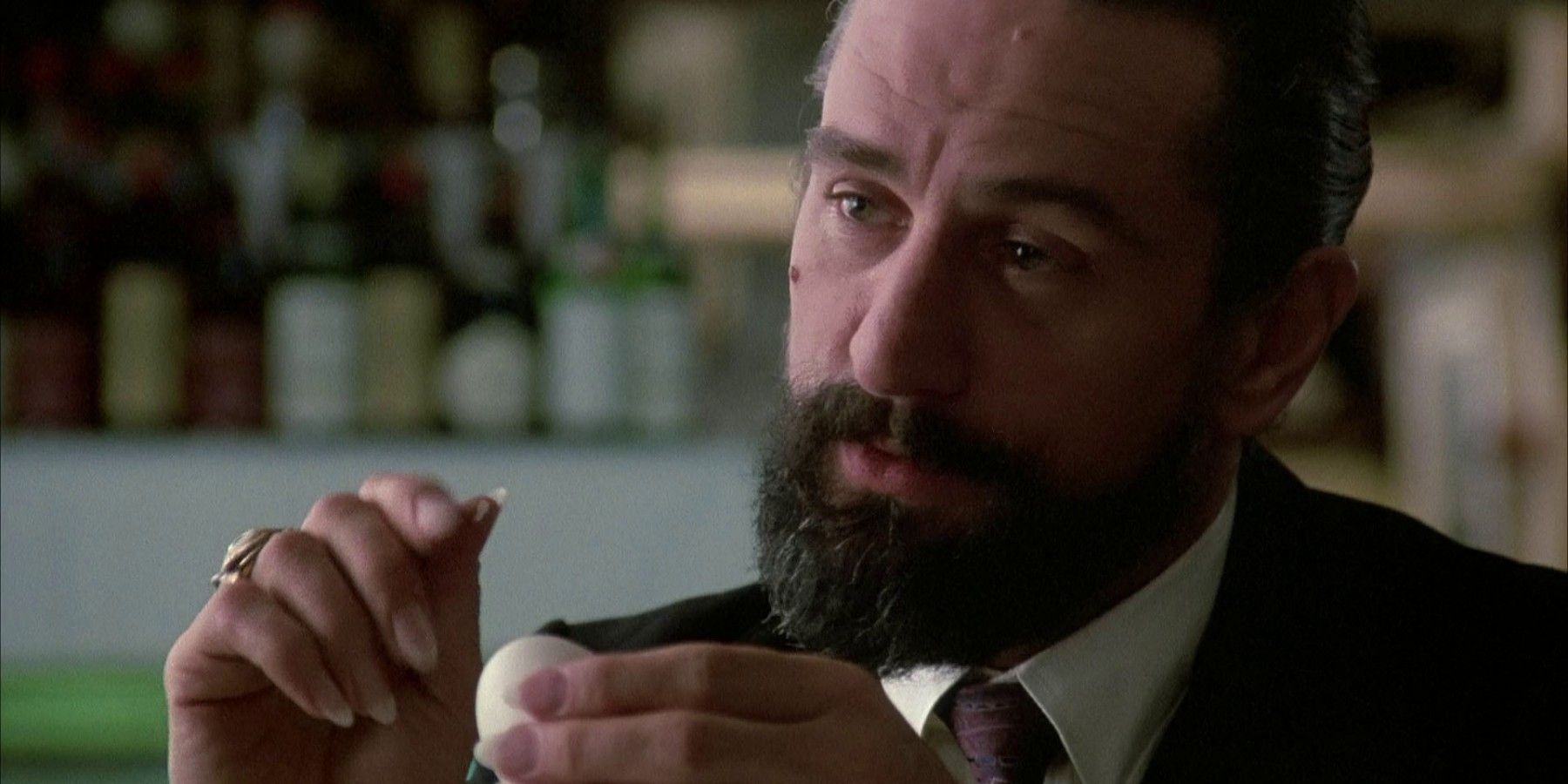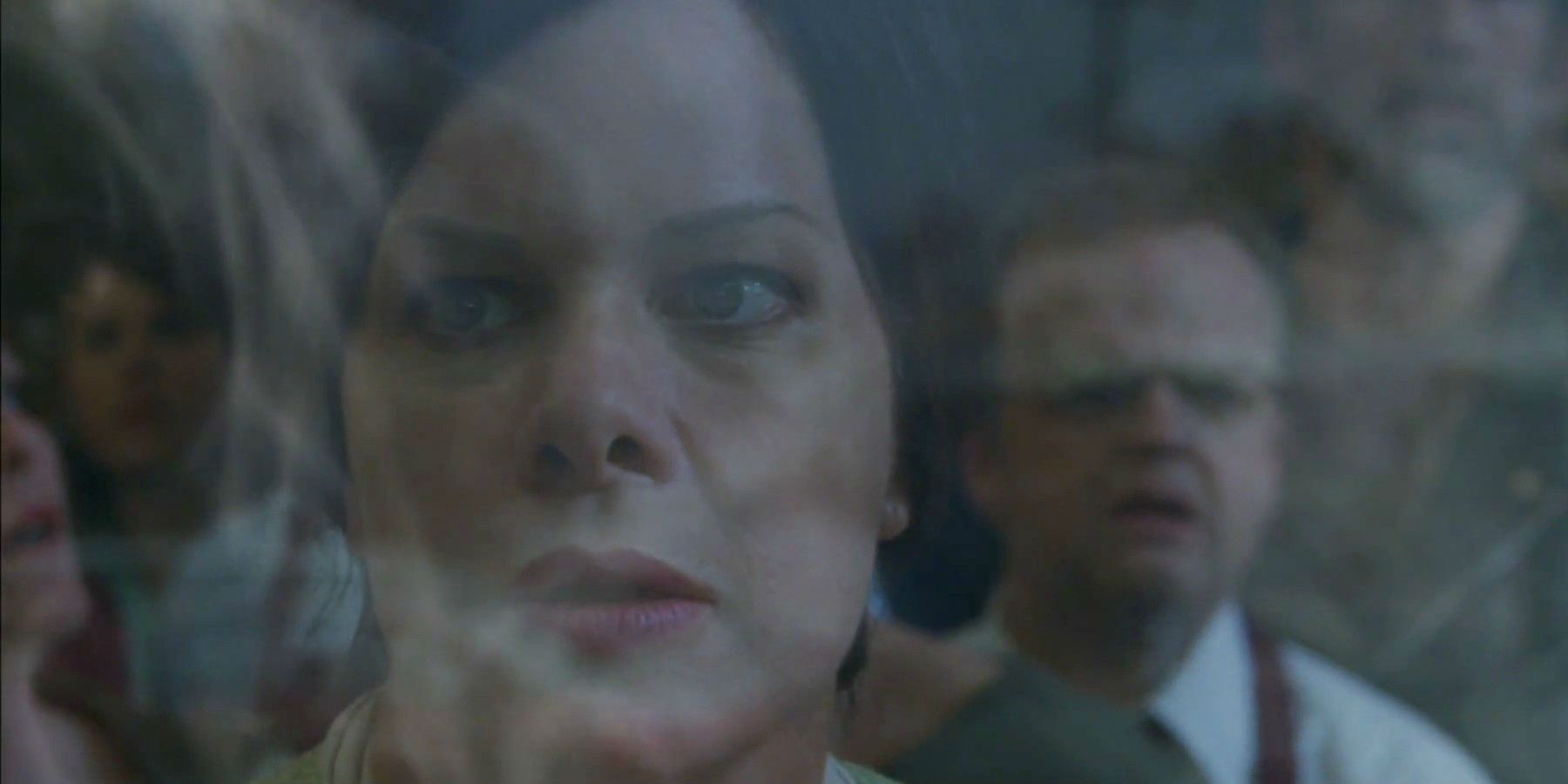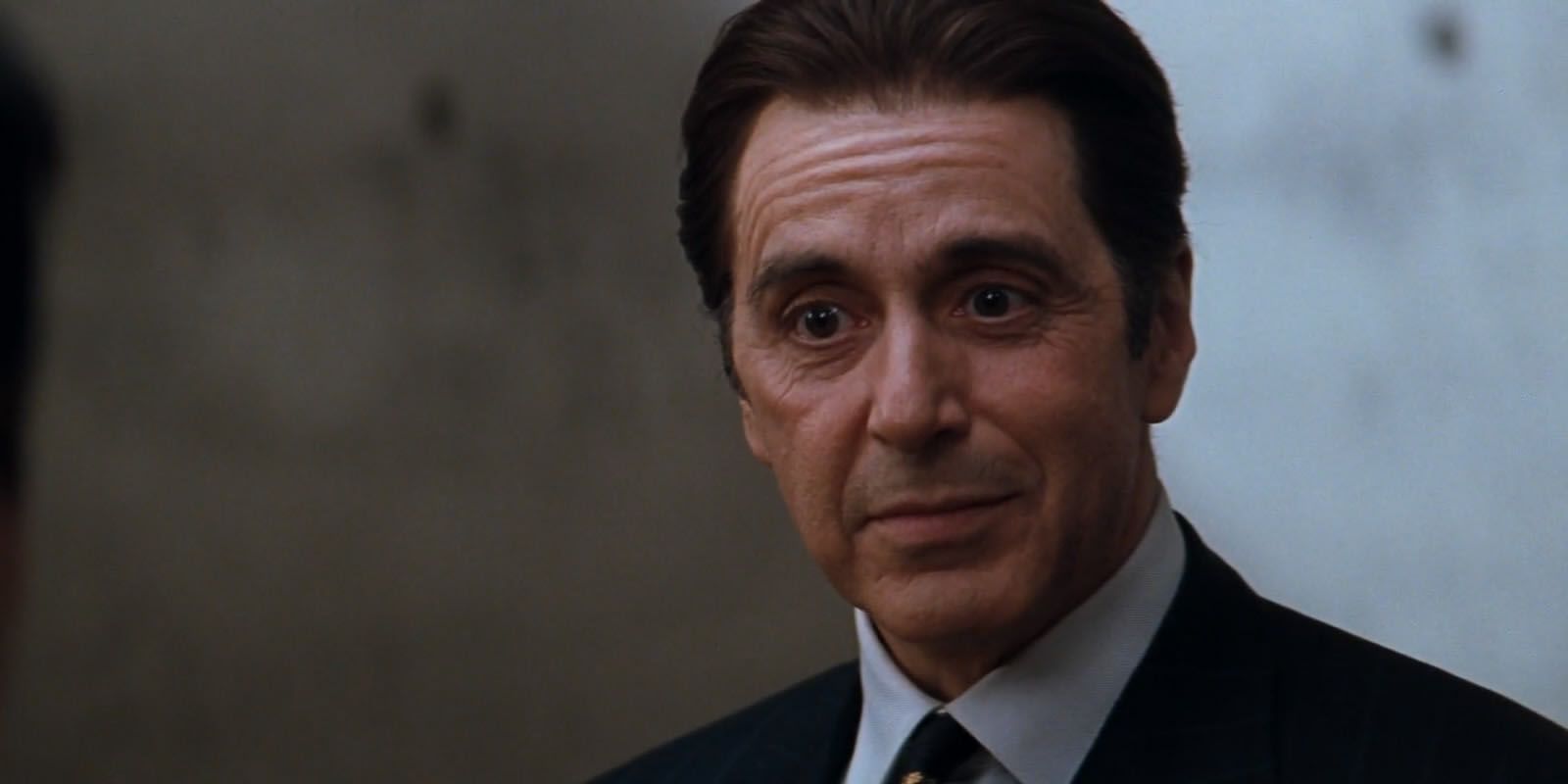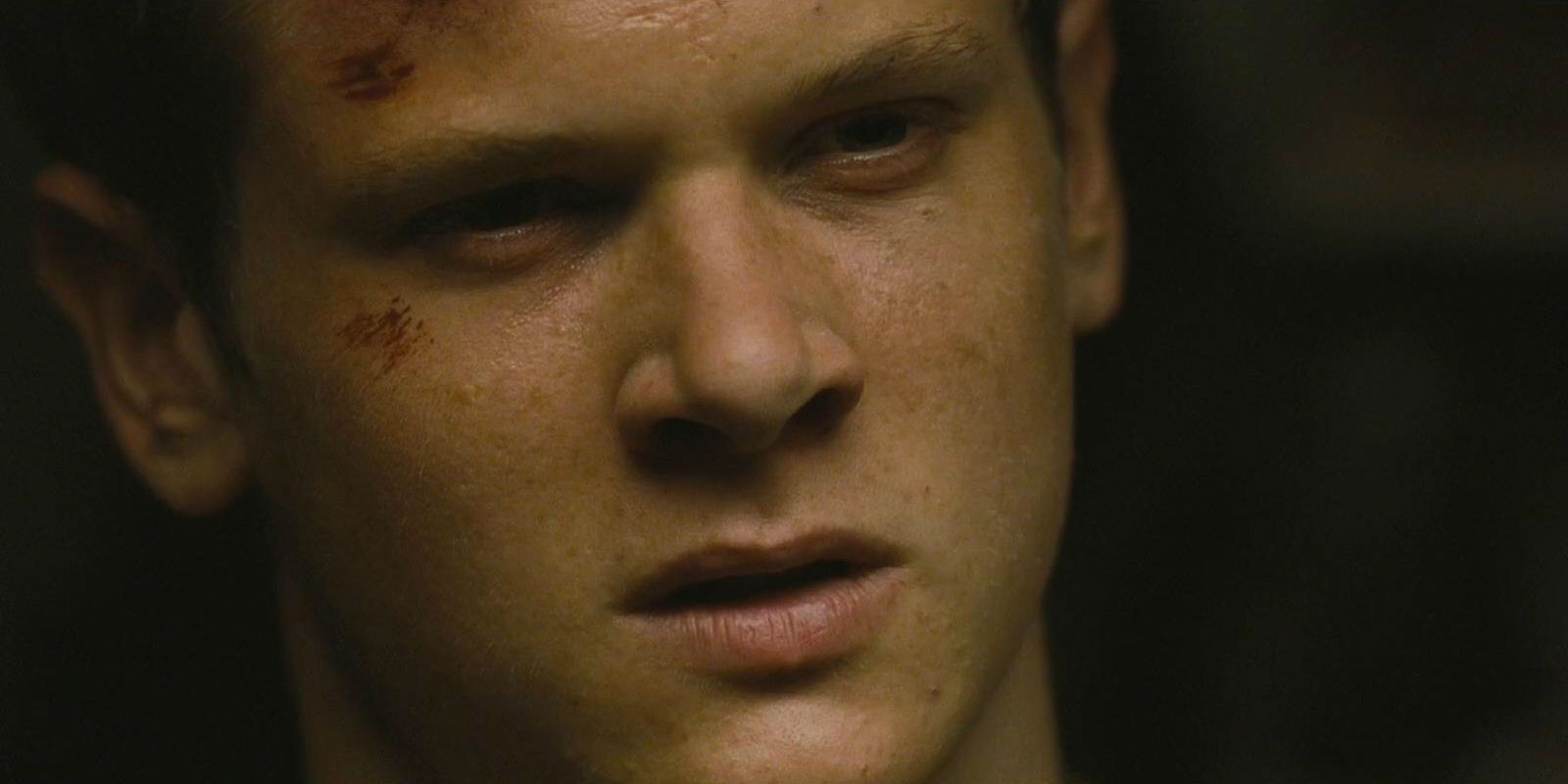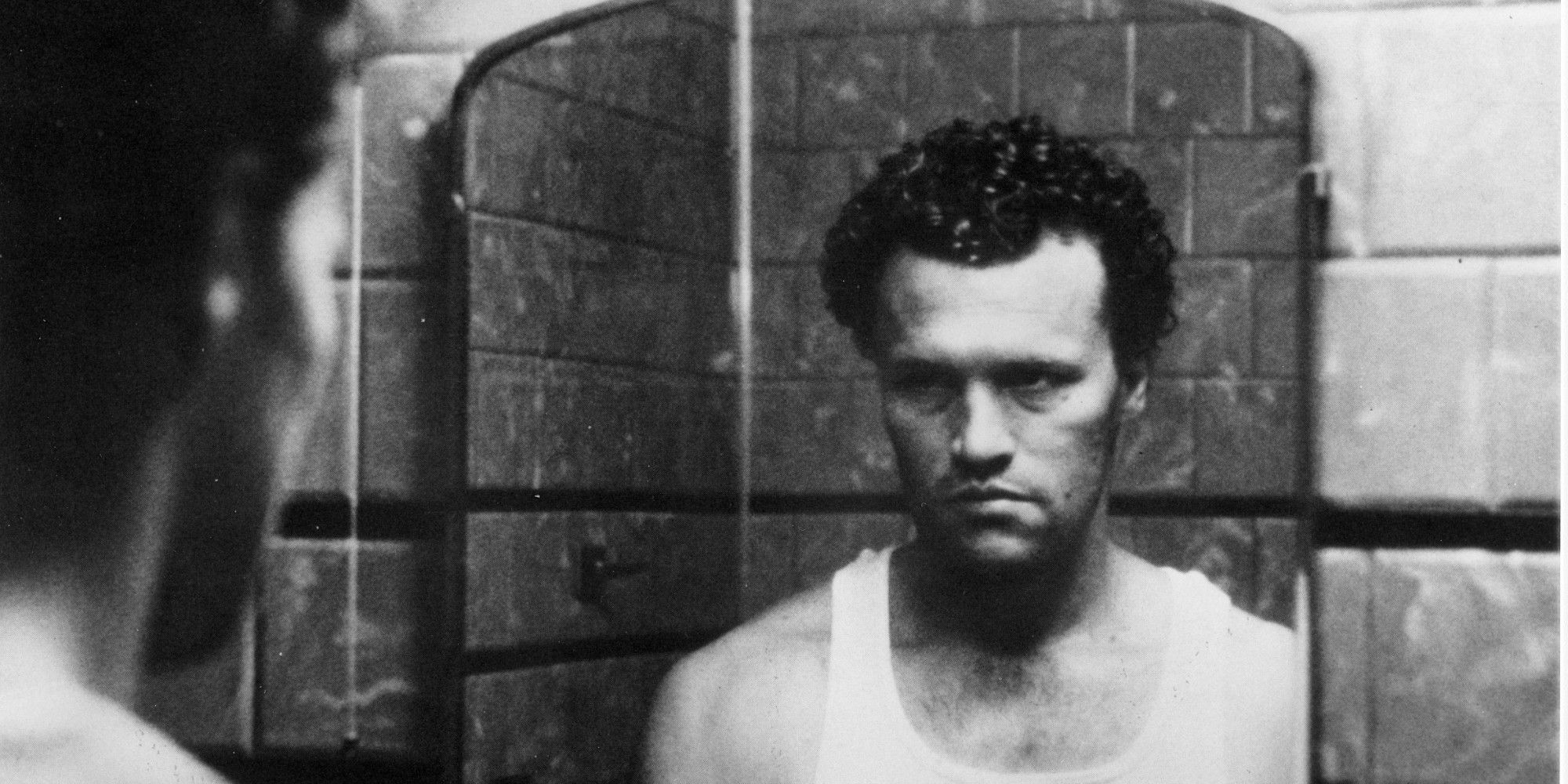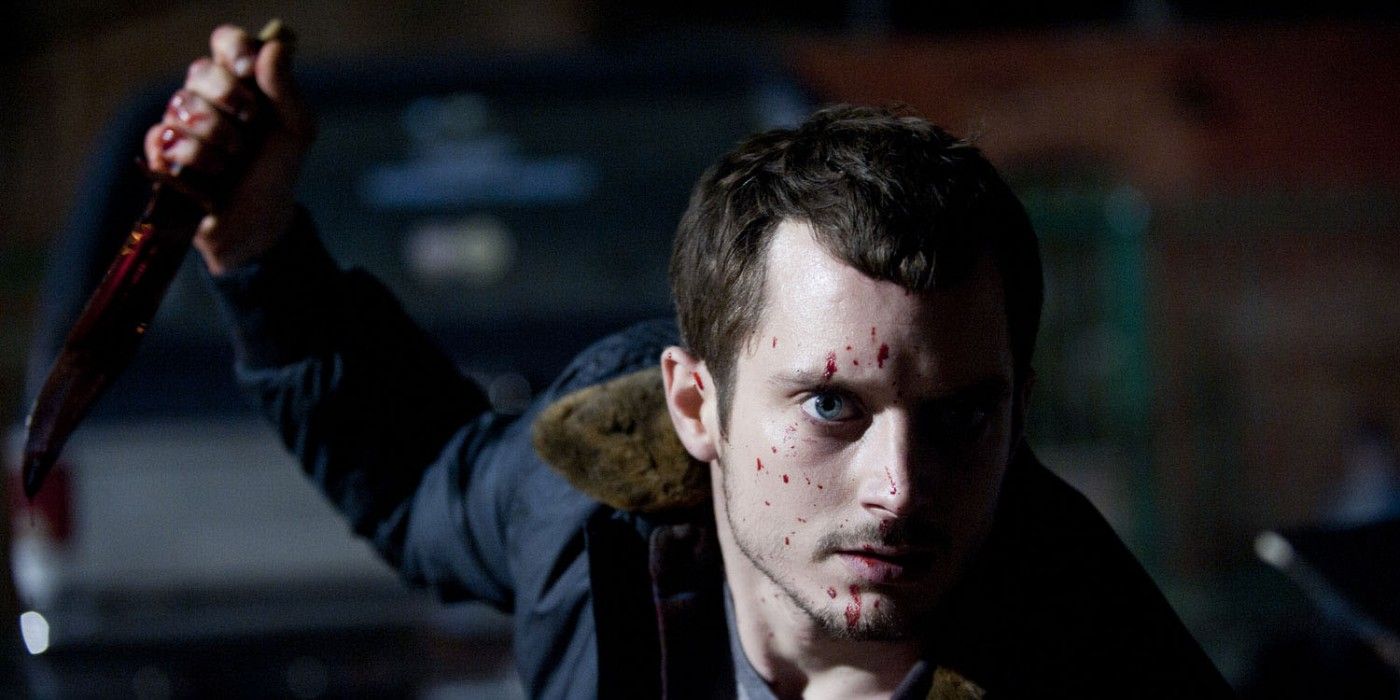They are the big names you might have grown up watching, assuming your parents either let you or you managed to sneakily watch their movies. They are eternally synonymous with pure evil. They are the ones you’d hate to find in the dark. Much like any other genre popular in Hollywood, horror has thrived, and arguably survived, because of the big names. Michael Myers and Jason Voorhees were the masked, stoic slashers competing for the highest teenage body count, Freddy Krueger stole the show from both of them in the late ‘80s with his demented antics, and Hannibal Lecter soon followed with his menacing intelligence and charisma.
Plenty others are held in high regard, but those four are perhaps the biggest names. While we may love them and enjoy watching their films, propping up a select few figures means many other worthy counterparts are left as remnants of the past. These 19 villains equally deserve to have their names immortalized.
19. Harry Warden - My Bloody Valentine (1981 & 2009)
This segment may, admittedly, seem like a horror fandom faux pas because, for those in the know, Harry Warden was never the primary villain of either version of My Bloody Valentine. We do see him kill, but only through flashbacks. In a genre so overly reliant on myths and urban legends, the legend of Harry Warden somehow stands out, though that may be primarily due to the film’s censorship history, as well as both films’ expecting us to believe that Warden has come back to kill, only to pull the rug out from under us.
Regardless of whether or not Harry Warden is the one carrying the pickaxe, the look of the slasher miner, especially in the 1981 original, is decently terrifying. He has a somewhat similar presence to Michael Myers in the original Halloween, in that his eyes are black and soulless and the breathing created by the oxygen tank is rather ominous. Superficial comparisons to a more legendary slasher aside, Harry Warden’s aesthetics should have made for greater popularity.
18. The Follower - It Follows (2014)
Time will tell whether or not It Follows grows into the genre classic many have been hyping it to be, but for now, this cult hit and its peculiar villain still have plenty of praises to be sung. Unlike like every other antagonist on this list, "The Follower" doesn’t take a specific form. It could appear as any person in the world, including those you love and trust, and all that matters is it will not stop until you’re dead.
Perhaps that inability to recognize it makes it the most terrifying enemy. There is a genuine lack of emotion in The Follower, as well. It is the perfect stoic, cold-blooded killers, with enough power to make it almost inescapable. There are plenty of theories as to what The Follower represents, and one possibility is that it characterizes the responsibility and perceived burden of adulthood. These kids try to hold onto their youth in spite of many signifiers, like the pool, eroding around them, but The Follower is an ever-present reminder of what they can’t escape.
17. Dr. Decker - Nightbreed (1990)
Prior to Clive Barker’s Nightbreed, David Cronenberg had more than proven himself as a horror filmmaker with titles like Scanners, Videodrome, The Fly, and Dead Ringers, so maybe it isn’t the greatest surprise he could play a fantastic creep. Even though it was his first acting gig in a major role, Cronenberg brings Barker’s Dr. Decker to life. It’s simply unfortunate that those in charge chose to advertise Nightbreed as a slasher film due to his role. It was, without a doubt, misguided thinking considering the film’s story and that slasher films had long since fallen out of favor.
Decker’s unsettling mask, which looks like it could have been taken from a Marilyn Manson video shoot or Corey Taylor of Slipknot, is reason enough to include him here, but there’s more to what lies beneath. It’s clear that something inside of Decker has snapped, and yet when he speaks either in or out of disguise, he comes across completely lucid and rational. He almost gives the impression that he’s evil if only because he can.
16. Dad Meiks - Frailty (2002)
Sometimes the person to fear the most is the one with the strongest convictions, because if they are strong enough, they have nothing to lose. In the largely forgotten religious horror film Frailty, then-first time director Bill Paxton plays Dad Meiks, a single father of two young boys who, thanks to an alleged vision and message from God, suddenly believes it is his duty to dispatch the demons hiding in human form from the world.
When the time comes for the father Meiks’s first victim, the film is immediately and understandably dismissive of his new mission in life. The camera violently shudders when he tries to sneak a peek at each person’s sins, but the audience is never privy to what he sees. Such a directorial choice might initially feel alienating, but it’s meant to emphasize Meiks’s delusions of grandeur. Paxton does a solid job of stressing his jarring turn from normal dad to calm psychopath.
15. Marlow - 3o Days of Night (2007)
This inclusion must feel rich considering 30 Days of Night’s placement in the 16 Most Polarizing Modern Horror Movies list. Like the entry in that article states, however, one of the most glaring positives about 30 Days of Night was its depiction of vampires as brutal, vicious beasts roving in packs to feast on unsuspecting humans. Additionally, because of Marlow (Danny Huston), they became a thinking man’s monster, if you will.
Obviously, traditional depictions of vampires as sophisticated, cunning humanoid romantics began with Bela Lugosi in 1931, and for the most part, that identity was upheld by performers like Christopher Lee, in his reign as Hammer Horror’s resident bloodsucker, and even Gary Oldman, with his rendition of the monster in a more faithful adaptation of Bram Stoker’s novel. As Marlow, Jack Huston revitalizes vampire mythology by straddling the line between intelligent killer and primal creature. The very look of him is enough to intimidate and he is perfectly aware of that.
14. Victor Crowley - Hatchet trilogy (2006-13)
In the 1980s, slasher movies were king – well, they were for three years and then they lost their crown. The ‘80s and a fair portion of the ‘70s churned out slasher after slasher, and even outside of the big names, a few have stood the test of time for genre fanatics. Naturally, this era of horror has its followers, and many filmmakers have tried to pay their respects, only to miss the point. Adam Green’s Hatchet is one of the few to truly understand the fun of the early ‘80s, and it birthed a new name in terror: Victor Crowley.
Firstly, in all three Hatchet movies, Kane Hodder, a genre icon who gave life to the Friday the 13th movies of the late ‘80s and onward until Freddy v. Jason, played Victor Crowley. That casting immediately earned Green’s film credibility. Secondly, Victor isn’t just another undead psychopath who’s impossible to kill. In fact, he is essentially a poltergeist who is automatically revived the next night if he is killed, essentially poking fun at what has kept certain franchises going strong for decades. Finally, his kills are creative and gushing with geysers of blood.
13. Peter Quint and Miss Jessel - The Innocents (1961)
One could argue that malevolent beings that are rarely seen onscreen probably deserve their underrated status. In fact, as far as Jack Clayton’s The Innocents is concerned, it’s quite possible that the two spirits haunting the estate, Peter Quint (Peter Wyngarde) and Miss Jessel (Clytie Jessop), are merely a figment of Miss Giddens’s (Deborah Kerr) imagination. But when they are present, their menace is palpable enough to create an ominous atmosphere that permeates the film.
Each of the spirits makes their presence known to either of the children, Flora (Pamela Franklin) and Miles (Martin Stephens), and the results range from debilitating to fatal when Miss Giddens attempts make the children confront their existence. But before these moments closer to the film’s finale, they are usually only seen in the distance, making Miss Giddens wonder if they are truly there. When Quint reveals himself to Miss Giddens, however, it proves that what’s scariest is what's left to the imagination, aided by some oppressive low-key lighting.
12. Mick Taylor - Wolf Creek (2005)
Hollywood certainly loves to make horror movies based upon or inspired by true events, though perhaps now the industry gushes more over the paranormal than over mass murderers. These films aren’t as common, but they do elicit a certain fascination. The 2005 Australian shocker Wolf Creek was inspired primarily by the Backpacker Murders of the ‘90s, and its central figure, Mick Taylor (John Jarratt), is one colorful character.
The first thing one notices about Mick Taylor is his affable Aussie personality. He is rough around the edges, but he remains upbeat and bright enough that his grizzled hunter appearance is offset, at least momentarily. And then there are moments like his disturbing "head on a stick" routine when he’s gruesomely mutilating someone, yet mostly not breaking character. In fact, his retention of that calm demeanor and dark sense of humor during moments of carnage heightens the explosions he lets out.
11. Billy - Black Christmas (1974)
Bob Clark’s – the same Bob Clark who gave us A Christmas Story – Black Christmas helped inspire John Carpenter’s Halloween, and by proxy the future of slasher films, but there’s one thing it did entirely different from what would soon follow. All of the other slasher films, especially Halloween, had a name that viewers could latch onto and whose presence filled them with fear. In Black Christmas, however, our killer has a name, but we don’t get to truly see him onscreen until the end – or so we think.
From what we hear of Billy when he harasses the sorority sisters, he is certainly an individual with some crass tastes, though anyone might pass him off as merely an obscene phone-caller rather than a psychopath. From what we can gather in getting a glimpse from his perspective, it’s clear he suffers from severe disturbances, and the lack of any recognizable identity is what’s scariest for both the characters and the audience.
10. Leslie Vernon - Behind the Mask: The Rise of Leslie Vernon (2006)
The tagline for Scott Glosserman’s black comedy mockumentary horror feature Behind the Mask: The Rise of Leslie Vernon was as follows: “Jason. Freddy. Myers. We all need someone to look up to.” As it turns out, the film is set in a universe where the villains who comprise that unholy trinity are real, and Leslie Vernon (Nathan Baesel) is out to make a name for himself by letting a documentary crew film his rise to slasher stardom.
To start, Vernon is quite accommodating in the all-access look into his life, making a few poignant jokes about slasher conventions – his comments in the segment depicting his workout regimen are pretty on the nose – and is more than willing to assist the documentary crew in using more appropriate language and behavior with regards to such sensitive material. Leslie Vernon is a charming man, but when the time comes for his big coming out party, he puts his game face on and means absolute business.
9. Candyman - Candyman trilogy (1992-8)
Arguably the biggest name included here, any sort of talk about Candyman (Tony Todd) being underrated might cause a fuss among genre fanatics. He easily ranks with all of the big slasher names as one of the best, but that doesn’t mean he gets the recognition he deserves. Many genre fans will point to the ‘90s as a low point for slashers, and horror in general, and as a result, more attention is given to the glory days of the ‘70s and the ‘80s. But, along with other masters of fright like Scream’s Ghostface, Candyman should be remembered more for rising out of the decade’s mediocrity.
First of all, Candyman is easily synonymous with uncompromising brutality. The psychotherapist's death scene, with all its punch and vigor, is enough to make any viewer squirm at every scream of pain. And yet, in spite of his viciousness, there is an underlying, oddly seductive quality to him. Between his deep voice and the musical cues that accompany his onscreen appearances, he has a darkly magnetic personality that draws you in.
8. Drayton Sawyer and the Hitchhiker - The Texas Chain Saw Massacre (1974)
When people think of the The Texas Chainsaw Massacre franchise, understandably, their first thought is of Leatherface, that lumbering, hulking mass wielding a mighty chainsaw and wearing a mask made of human skin. He gets the kills and Ed Gein inspired his character, so naturally he earns most of the credit. What most people tend to forget, however, is that his role in Tobe Hooper’s original film is relatively minimal, and perhaps only on par with the film’s other two members of the sawyer family, Drayton (Jim Siedow) and the nameless hitchhiker (Edwin Neal).
The hitchhiker begins the ominous tone as a taste of what is to come, cutting his hand in front the shocked youths in the van and then taking the razor to someone else. Then, when no one but Sally (Marilyn Burns) remains standing and she has been kidnapped for a Sawyer family dinner, the viewer gets a full sense of the twisted Sawyer family dynamic. In fact, Drayton is an unofficial patriarch of sorts, and Leatherface is there to obey his orders.
7. Frank Booth - Blue Velvet (1986)
When it comes to Blue Velvet, even the most ardent David Lynch fans are likely to first recall antagonist Frank Booth (Dennis Hopper), for his blunt criticism of a certain imported beer and for aggressively singing the praises of something more domestic. It's undoubtedly a memorable moment amongst many with Frank, whose personality in itself is arguably more haunting than anything else in the film. His persona stands in direct contrast to the sleepy, idyllic presentation of small-town Lumberton.
Personality-wise, Frank is overly aggressive, even when listed among many of the names mentioned here. He is abusive, confrontational, and overall possessing of a fuse much shorter than his stature. Though he is in no way an empathetic figure, he is a troubled one, indulging in a mysterious gaseous substance that heightens his already forceful sexuality. And yet, there are still moments when he can switch off his primal instincts and appreciate some forms of beauty, like one particular Roy Orbison tune. His off-kilter personality makes him an entertaining watch, even if that watch isn’t always an easy one.
6. Louis Cyphre - Angel Heart (1987)
There are plenty of ways an actor could portray the Devil himself. He or she could choose to play a bombastic, bellicose hatemonger intent on making his victims suffer and squirm. Red skin, hooves, a spiked tail. and a pair of horns mounting the head probably wouldn’t hurt for such a portrayal. Or an actor could approach the character much like Robert de Niro had for Louis Cyphre in the neo-noir psychological horror film Angel Heart.
In Alan Parker’s film, De Niro plays Mr. Cyphre, AKA Lucifer, as an enigma who uses wise and articulate language to pass himself off as a normal man of high class and expectations. He embodies the same seductive, enticing qualities that draw unsuspecting people into his grasp, giving him dominion over their souls in exchange for short-lived fame and fortune. Such a depiction of the Devil is rather old school, sticking to the same rhetoric taught about Mephistopheles.
5. Mrs. Carmody - The Mist (2007)
At the end of his 2002 comedy special “Complaints & Grievances,” George Carlin suggested adding a commandment to the original list of ten, which he'd previously stripped down to two. He suggested, “Thou shalt keep thy religion to thyself.” There are certainly those who don’t obey his commandment, and there are just as many on the opposite side who try to belittle the intelligence of those who do believe in a higher power. Mrs. Carmody (Marcia Gay Harden), from the adaptation of Stephen King’s The Mist, is one of the former.
Mrs. Carmody is detestable from her first onscreen appearance to her dying seconds, which is both a credit to Harden’s performance and saying something considering there are carnivorous monsters from another realm attacking the occupants of the store. But in a film intent on using 1950s McCarth-ism as a mirroring of political relations at the time of filming, the creatures were never the true antagonists. Nonetheless, it was incredibly fulfilling to watch her bite the dust.
4. John Milton - The Devil's Advocate (1997)
For all that Robert de Niro accomplished with his portrayal of Louis Cyphre in Angel Heart, Al Pacino somehow effectively integrates every character trait one comes to expect from the Devil in The Devil's Advocate. Like Cyphre, his John Milton is every bit as charming and seductive, though is enigmatic without quite being the enigma Cyphre is. He is always just over the shoulder of Kevin Lomax (Keanu Reeves) or his wife Mary Ann (Charlize Theron), there to subtly guide and manipulate them.
Additionally, unlike Cyphre, Milton is one who is wont to bask in indulgence and decadence of all sorts, whereas Cyphre was a little more straight-laced, which perhaps makes him that much more persuasive trying to tap into a person’s hidden desires. And once his true identity is made clear to Kevin, he becomes the same bombastic, threatening figure in his speech, mocking those who follow God. Red skin, hooves, a spiked tail and a pair of horns he certainly did not need.
3. Brett - Eden Lake (2008)
The "evil children" subgenre of horror has been tried and true for more than a few decades now, and nowadays the evil child, or more specifically Satanic child, is nothing more than a silly cliché. Additionally, many other films, such as Ginger Snaps and Deadgirl, have explored the horrors of adolescence without truly emphasizing adolescents as horrific. If you thought evil children were terrifying, Eden Lake is here to tell you about some twisted teenagers.
In one of his earliest roles, Jack O’Connell plays Brett, the leader of a ruthless gang of youths intent on ruining a couple’s vacation, even going to the extent of hunting them down and murdering any other kids who get in the way. Most of the other kids with him aren’t as keen as he is, and during one scene the glee he expresses is enough to make anyone wonder about his life at home.
2. Henry - Henry: Portrait of a Serial Killer (1986)
Given the crop of slasher films that was amassed in the ‘80s, Henry: Portrait of a Serial Killer sticks out like a sore thumb, despite it definitely not harboring similar intentions. Plenty of mutilated bodies populate the film’s opening few minutes, but in a film with a total runtime of 82 minutes, it takes nearly half an hour for an onscreen death to occur. At that moment, it becomes clear that the film intends to prove to its audience that Henry (Michael Rooker) is no average slasher.
Henry has an uncompromising kitchen-sink film aesthetic that normalizes Henry and Otis’s (Tom Towles) misdeeds, but they’re all still depicted unflinchingly to enhance the shock value. A similar sort of dichotomy wrestles inside of Henry: the struggle of appearing as an average Joe versus his more psychopathic instincts. Even given the warpath he unleashes with Otis, that break from average to killer is never quite detectable, and that unpredictability makes him a fascinating character to watch.
1. Frank Zito - Maniac (1980 & 2012)
Both productions of Maniac feel much closer to reality than most slasher flicks that have been produced. An unassuming man playing predator, lurking in the shadows waiting for any unwitting victims, only to disappear into the night and repeat. Though gruesome violence of the original might have disguised it, 1980's Maniac and its remake are more intellectual than most.
Frank Zito could be absolutely anybody, which is emphasized by the physical contradictions of both actors who played the role. Joe Spinell’s Frank is an inherently menacing man to behold, and the violence he commits further accentuates any perceived ugliness. Elijah Wood’s Frank – from what we can see, given the remake’s cinematographic choices – is just as vicious, but perhaps less obvious in appearance. Both films are returns to the Peckinpah mantra that violence and death are ugly, and should be presented as such, thereby confronting our aestheticizing of violence and giving both actors free reign for repugnance.
-
What other villains do you all think don't receive the recognition they deserve? Let us know in the comments!

